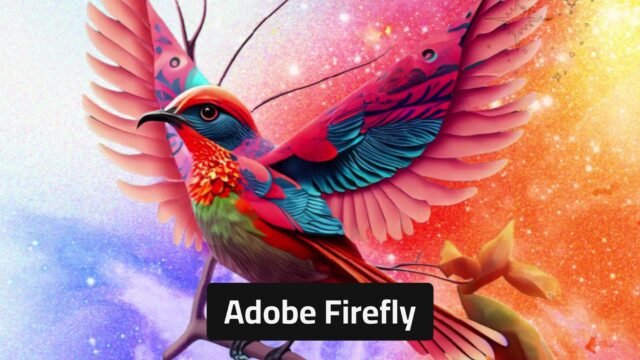
In the digital world, the announcement of Adobe Firefly, a suite of generative AI tools, stirred excitement and controversy, mirroring the challenges faced by Google Gemini. Adobe’s venture into the generative AI space highlights both the potential and the pitfalls of AI-driven creativity.
Key Highlights:
- Adobe Firefly: A new suite of generative AI tools designed to integrate seamlessly with Adobe’s Creative Cloud, including Photoshop, Illustrator, and Adobe Express.
- Ethical Approach: Unlike some competitors, Firefly was developed with an emphasis on ethical AI use, only training on copyright-free images or those from Adobe Stock, where contributors are compensated.
- Innovations and Features: The latest update introduced improvements like an enhanced understanding of text prompts, Generative Match for custom style content generation, and Photo Settings for ‘photography-style’ adjustments.
- Collaboration: Firefly’s integration with Photoshop allows multiple artists to work on the same image simultaneously, enhancing teamwork and creative flow.
- Access and Pricing: While there’s a limited free plan, full access requires a Creative Cloud subscription or the purchase of additional generative credits for heavy use.
Introduction to Adobe Firefly
Adobe’s Firefly represents a bold step into the generative AI landscape, promising to revolutionize how creatives and professionals produce digital content. However, its introduction has reignited debates over AI ethics, copyright, and the future of creativity, reminiscent of the challenges encountered by Google’s Gemini project. This article explores Adobe Firefly’s features, its ethical stance, and the broader implications for the creative industry.
Firefly: A Creative Revolution or an Ethical Quandary?
At its core, Adobe Firefly aims to enhance productivity and creativity, offering tools that simplify complex tasks and encourage innovative designs. Its capabilities range from text-to-vector image generation to sophisticated photo adjustments, all designed to integrate smoothly with existing Adobe software. However, Firefly’s commitment to ethical AI use sets it apart, ensuring that all training materials are copyright-compliant and offering compensation to Adobe Stock contributors.
Enhancing Creativity with Firefly
Firefly introduces several groundbreaking features:
- Generative Match: Tailors content generation to user-specified styles, adhering to brand guidelines or mimicking existing images.
- Photo Settings: Applies ‘photography-style’ adjustments, akin to camera lens controls, enhancing the quality and realism of generated images.
- Collaboration Tools: Enables real-time editing and feedback among multiple users, breaking new ground in collaborative digital creation.
Ethical Considerations and User Accessibility
Adobe’s ethical approach includes:
- Training on copyright-free or compensable Adobe Stock images.
- “Do Not Train” tags, allowing users to prevent Adobe from using their images to train future models.
- Partnership with the Content Authenticity Initiative and Google’s AI, Bard, to verify image origins and add metadata for identification.
Despite these measures, debates persist over the use of AI-generated art and the potential for copyright infringement, highlighting the need for ongoing dialogue and transparency.
Firefly’s Accessibility and Pricing
Firefly is accessible via a limited free plan or through a Creative Cloud subscription, with the option to purchase additional credits for extensive use. This pricing model aims to make advanced AI tools available to a wide range of users while also addressing concerns over excessive use and potential abuse.
Adobe Firefly represents a significant advancement in the integration of AI into creative workflows, offering powerful tools that promise to transform digital art and design. However, as with Google Gemini, its success will largely depend on navigating ethical challenges and ensuring that AI serves to enhance rather than undermine human creativity. The ongoing evolution of Firefly and similar technologies will likely continue to spark debate, underscoring the importance of balancing innovation with responsibility in the age of artificial intelligence.








